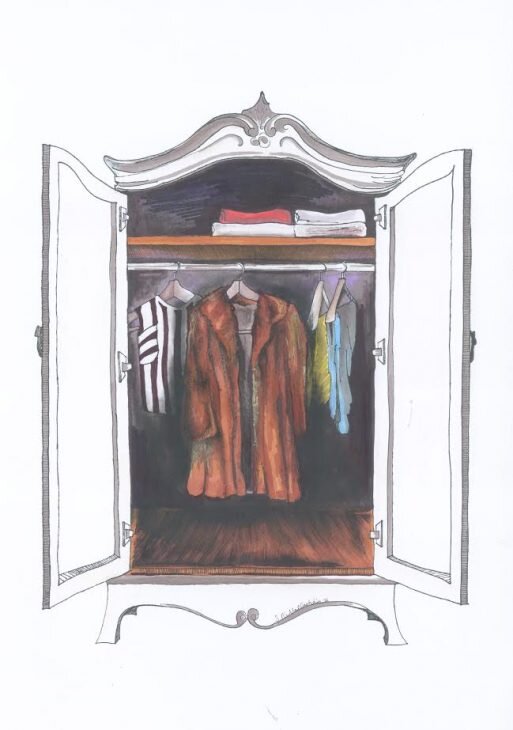Minnie Rafferty: Fur Coats and Female Empowerment
My Granny intimidated members of the British Army.
She drank sherry with a raw egg, she wore Max Factor powder and took no prisoners. She wasn’t like other Grannies.
Young British soldiers armed with machine guns knew not to loiter around the front of Rafferty’s Drapery and General Merchant in Carrickmore, in rural Tyrone. Tyrone was officially 'occupied' but the people of Carrickmore, my Granny included, rejected this reality.
Rafferty's was like many other local shops at the time, since closed; chaotic, curious and of utmost importance in a rural village. School uniforms, cigarettes and newspapers made up most of the business but pots and pans hanging from the roof and religious statues in glass cabinets also did a good trade. 'Interlocking knickers' sold well too, though I'm still not exactly sure what they are.

Minnie stood behind the counter for many, many years in front of a wall of floor-to-ceiling boxes of cigarettes. Subconsciously or not, when recently-stationed member of the British army would call in to purchase cigarettes, Minnie practiced power poses; both hands on the counter, flatly refusing their custom. If they tried to argue, she'd accuse them of intimidating her customers and would ensure a quick exit by chasing them with a haggard sweeping brush. On one occasion, amidst torrential rain a few of them cowered under the awning of her shop, she immediately rolled in the awning, with no fear of reprisal.
Minnie Mc Cullough was born near Greencastle, County Tyrone in 1906. She married Pat Rafferty and they had 7 children, their eldest daughter is my mother, Esther. Retrospectively, I understand my Granny was an outspoken, confident entrepreneur and feminist. She was outspoken, quick-witted and appeared to be afraid of no-one. She wore fur coats, lipstick and trousers in green or brown, exclusively.
Whilst they were in their teens, Minnie and her brother founded a general grocer with a delivery service. She drove the van, which even now is out of the ordinary. During the Second World War, Minnie made teddies and dolls and sold them. Such was her success, Crolly Dolls approached her with offers of business opportunities.
One of the reasons Granny Rafferty appeared more matriarch than maternal was by the unavoidable comparison myself and my two sisters made between her and my other Granny. Granny Dunne fitted the bill; she wore floral dresses, baked the best soda bread I've ever tasted and brushed my hair from the bottom up, so as not to hurt me. Like many women of her era, she appeared to exist only to care for others.
Once, when my mother asked Granny Rafferty to read me a story while she cooked dinner, Minnie informed me of financial highs and lows from the business section of the newspaper. I stood adjacent to the aga, the heart of the big house agog; I was three.
Minnie died in 1994 and the people of Carrickmore still talk about her. Her legacy of strength, love and a collection of fur coats and hats is one to be remembered. One of the coats now hangs in my wardrobe and whilst I am cognizant of the fashion industry's track record of undermining and objectifying women, its narrow gaze when it comes to diversity amongst class, race and shape, the fur coat transcends the real -world boundaries and is a symbol of empowered, pioneering, intelligent women like Minnie.
Women like me need women like her, even today.
